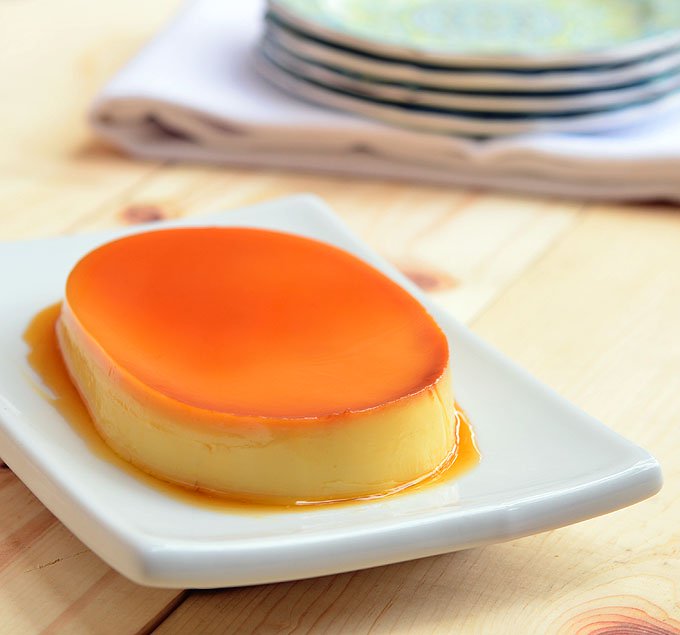The History Of Crème Caramel
Caramel Custard (leche flan)
Crème caramel used to be ubiquitous in European restaurants; food historian Alan Davidson remarks: In the later part of the20th century crème caramel occupied an
excessively large amount of territory in European restaurant dessert menus. This was probably due to the convenience,
for restaurateurs, of being able to prepare a lot
in advance and keep them until needed.

Etymology Of Names
Caramel pudding in RestaurantsBoth crème caramel (French 'caramel cream') and flan are French names,
but flan has come to have different meanings in different regions.
In Spanish-speaking countries and in The United States of America, flan refers to crème caramel.
This was originally a Spanish usage, but the dish is now best known in the United States in a Latin American context.
Elsewhere, including in Britain, a flan is a type of tart somewhat like a quiche.
The Modern English word flan comes from French flan, from Old French flaon,
in turn from Medieval Latin fladonem, derived from the Old High German flado, a sort of flat cake,
probably from an Indo-European root for 'flat' or 'broad'.
The North American sense of flan as crème caramel was borrowed from Latin American Spanish..

Preparation
Crème caramel is a variant of plain custard (crème) where sugar syrup cooked to caramel stageis poured into the mold before adding the custard base.
It is usually cooked in a bain-marie on a stove top or in the oven in a water bath. It is turned
and served with the caramel sauce on top, hence the alternate
French name crème caramel renversée.
Turning out larger dishes requires care, as the custard easily splits. Larger dishes also
require more care to avoid undercooking the interior or overcooking
the exterior. Thus, crème caramel is often cooked and served in ramekins.
Imitations
An imitation of crème caramel may be prepared from "instant flan powder", which is thickenedwith agar or carrageenan rather than eggs. In some Latin American countries,
the true custard version is known as "milk flan" (flan de leche) or even "milk cheese", and the
substitute version is known as just "flan".
